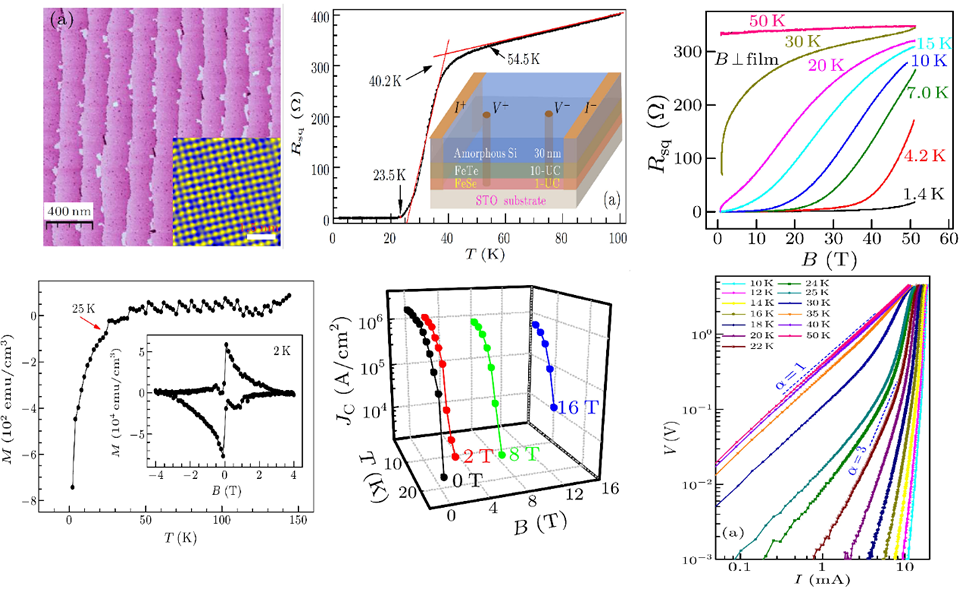
1. Intermediate bosonic metallic state in the superconductor-insulator transition
Whether a metallic ground state exists in a two-dimensional system beyond Anderson localization remains an unresolved question. We studied how quantum phase coherence evolves across superconductor–metal–insulator transitions through magnetoconductance quantum oscillations in nanopatterned high-temperature superconducting films. We tuned the degree of phase coherence by varying the etching time of our films. Between the superconducting and insulating regimes, we detected a robust intervening anomalous metallic state characterized by saturating resistance and oscillation amplitude at low temperatures. Our measurements suggest that the anomalous metallic state is bosonic and that the saturation of phase coherence plays a prominent role in its formation.
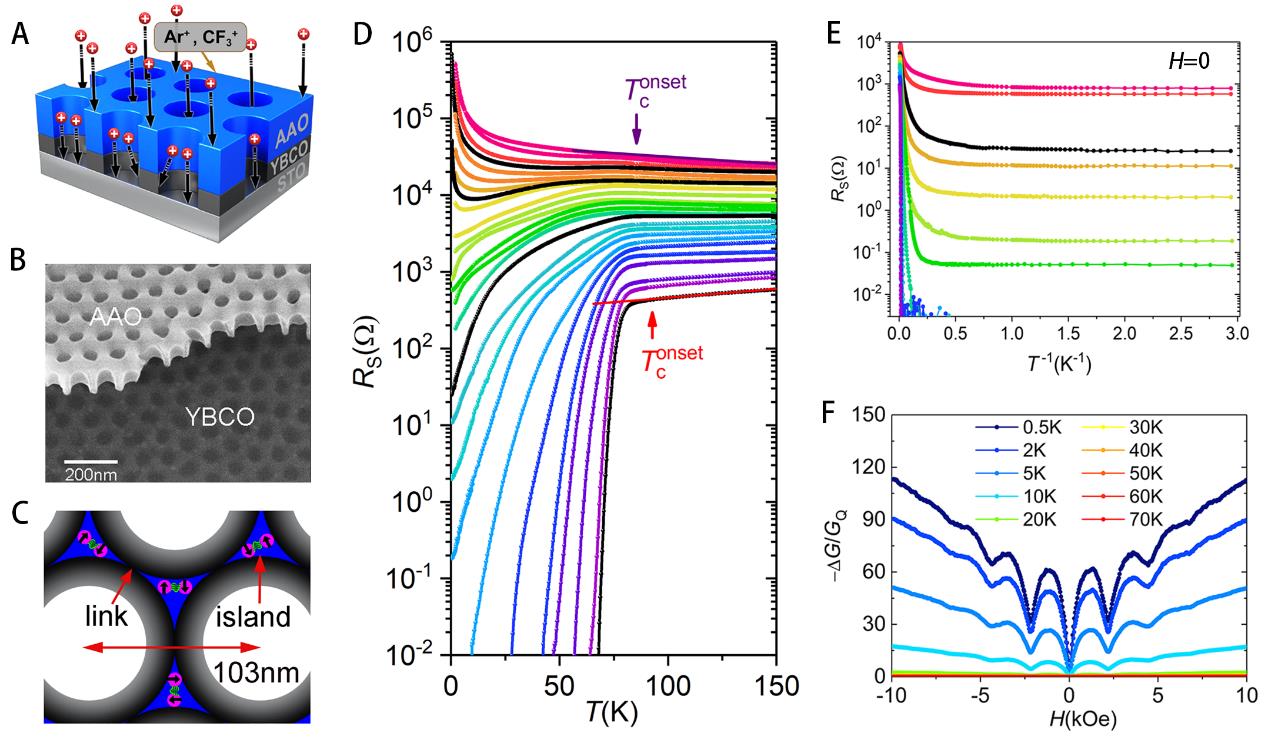
2. Quantum Griffiths singularity of superconductor-metal transition in Ga thin films
The quantum Griffiths singularity in two dimensional (2D) superconducting system is observed for the first time. The researchers studied three monolayer thick Ga films in ultralow temperature regime, in which 2D superconductivity and superconductor to metal transition were detected. Furthermore, when approaching the zero temperature quantum critical point, they found the divergence of the dynamical critical exponent, which is consistent with the Griffiths singularity behavior. The superconductor-metal quantum phase transition in this 2D superconducting system with disorder could thus be explained by the theory of quantum Griffiths singularity, which is different with the previous understanding of quantum phase transition in 2D superconductors.
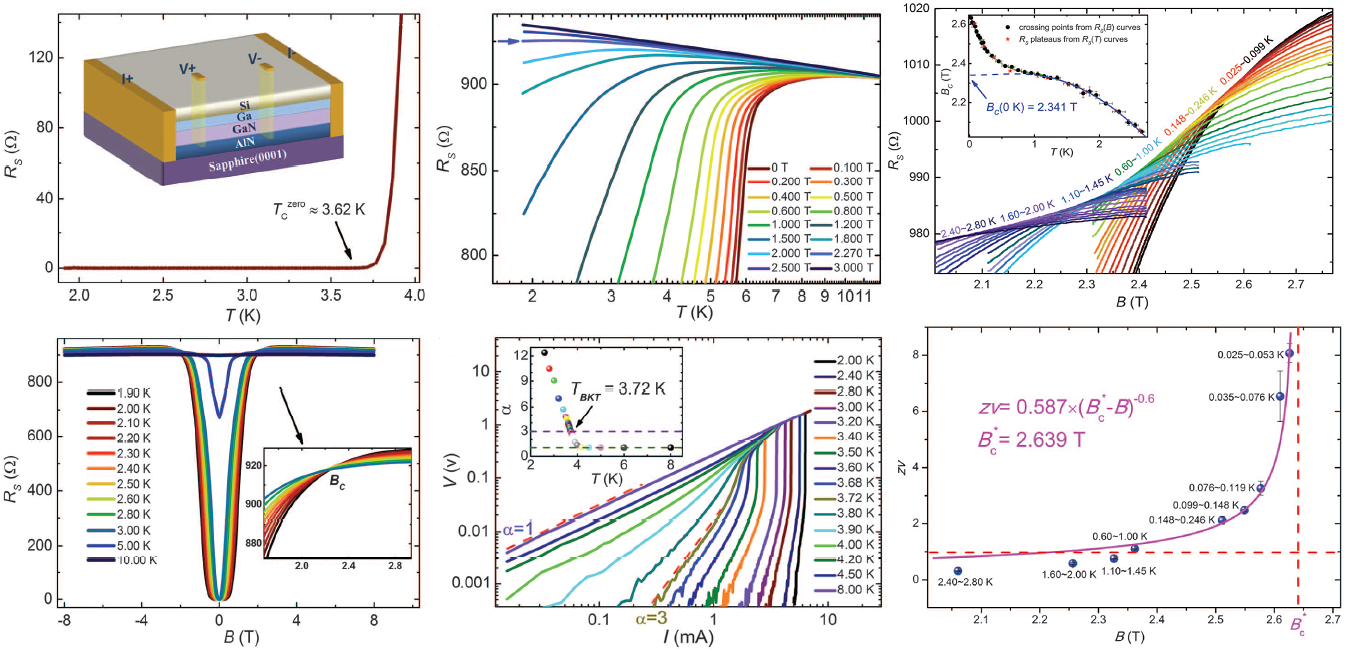
3. Anomalous quantum Griffiths singularity in ultrathin crystalline lead films
Superconductor-insulator/metal transition (SIT/SMT) represents a prototype of quantum phase transition, where quantum fluctuation plays a dominant role and dramatically changes the physical properties of low-dimensional superconducting systems. Recent observation of quantum Griffiths singularity (QGS) offers an essential perspective to understand the subtleties of quantum phase transition in two-dimensional superconductors. Here we study the magnetic field induced SMT in ultrathin crystalline Pb films down to ultralow temperatures. The divergent critical exponent is observed when approaching zero temperature quantum critical point, indicating QGS. Distinctively, the anomalous phase boundary of SMT that the onset critical field decreases with decreasing temperatures in low temperature regime distinguishes our observation from previous reports of QGS in various two-dimensional superconductors. We demonstrate that the anomalous phase boundary originates from the superconducting fluctuations in ultrathin Pb films with pronounced spin-orbit interaction. Our findings reveal a novel aspect of QGS of SMT in two-dimensional superconductors with anomalous phase boundary.
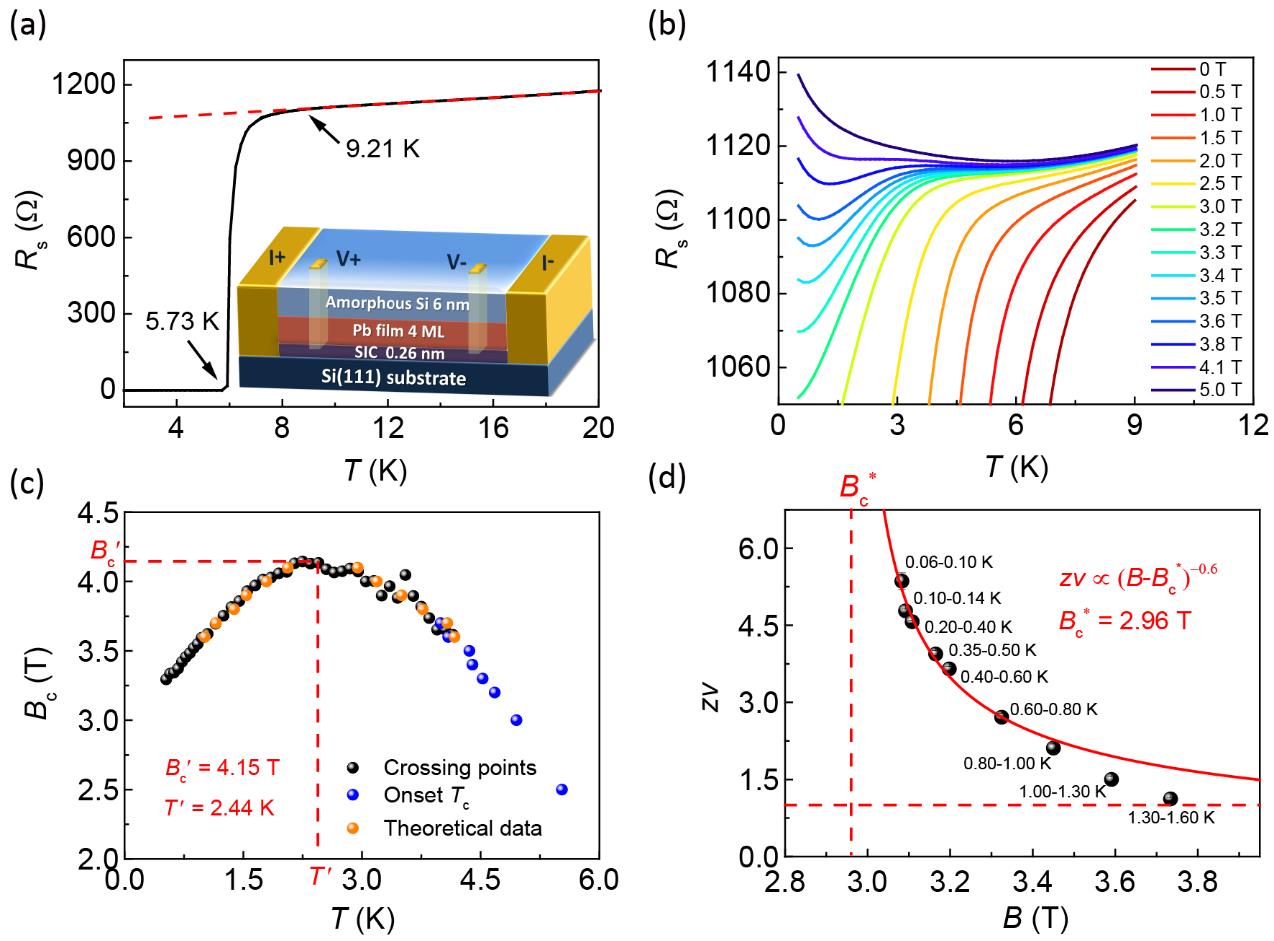
4. Interface-Induced Zeeman-Protected Superconductivity in Ultrathin Crystalline Lead Films、
A new kind of Zeeman-protected superconducting system is artificially created in the macroscopic scale by inserting striped incommensurate (SIC) phase at the interface between ultrathin crystalline lead film and Si(111) substrate through molecular beam epitaxy (MBE) technique. By performing systematic transport measurements at low temperatures and ultrahigh magnetic fields, it is found that the superconductivity can survive under a large parallel magnetic field up to 40 T far beyond the Pauli limit, providing clear evidence of Zeeman-protected superconductivity in the Pb/SIC/Si heterostructure. The ab initio calculations demonstrate that the lattice distortion in SIC phase can extend to the neighboring lead film and induce considerable Zeeman-type SOI in the system. Furthermore, a general microscopic theory for the in-plane critical field of two-dimensional dirty superconductivity with various kinds of SOI and spin-orbit scattering is developed to quantitatively illuminate the underlying physical mechanism for the Zeeman-protected superconductivity. The findings not only provide a new platform to create in-plane inversion symmetry breaking superconducting system, but may also stimulate further studies on the interface modulation of unconventional superconductivity in 2D heterostructures.
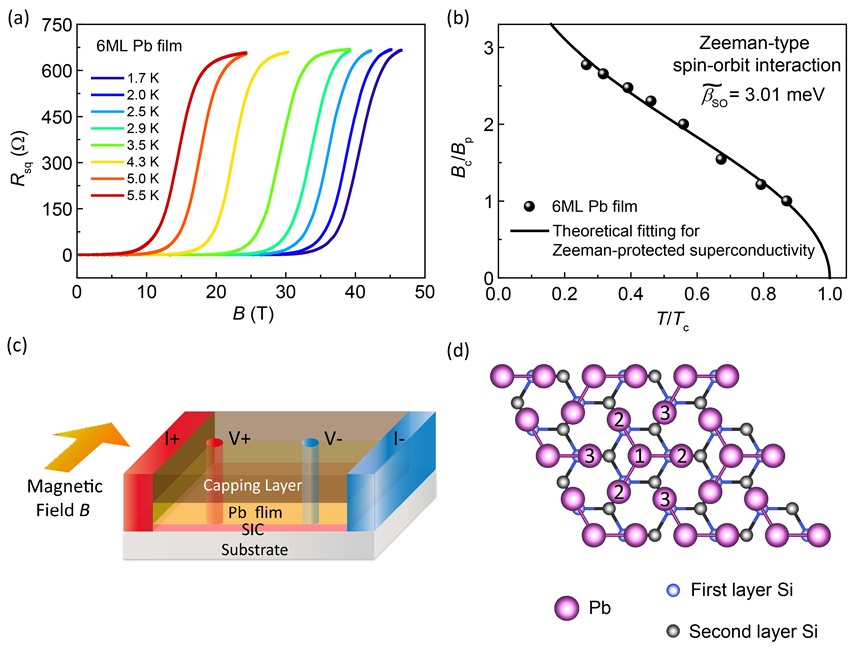
5. Spectroscopic Imaging of Quasiparticle Bound States Induced by Strong Nonmagnetic Scatterings in One-Unit-Cell FeSe/SrTiO3
Spectroscopic signatures of the sign-reversing Cooper pairing were detected in one-unit-cell (1-UC) FeSe/SrTiO3(001) prepared by ultrahigh-vacuum molecular-beam-epitaxy technique. Nonmagnetic Pb adatoms were deposited on 1-UC FeSe surface to study the effects of strong potential scatterings on Cooper pairing. Systematic tunneling spectra measured upon the Pb adatoms show comprehensive signals of the quasiparticle bound states, including superconducting-gap-like suppression, spectral-weight enhancement of the subgap electron-like state, and systematically modulated bound-state energy by fine tuning of the scattering potentials. The experimental spectral lineshape reconstructed by Pb adatoms were selectively reproduced in theory within sign-reversing pairing scenarios, e.g., hidden s±-, extended s±- and nodeless d-wave pairings. The finding implies that, in addition to previously detected phonons, spin fluctuations play an important role in driving the Cooper pairing in FeSe/SrTiO3(001). The sign reversal in the gap function revealed here is a significant ingredient in a unified understanding of the high-temperature superconductivity in heavily electron-doped iron selenides.
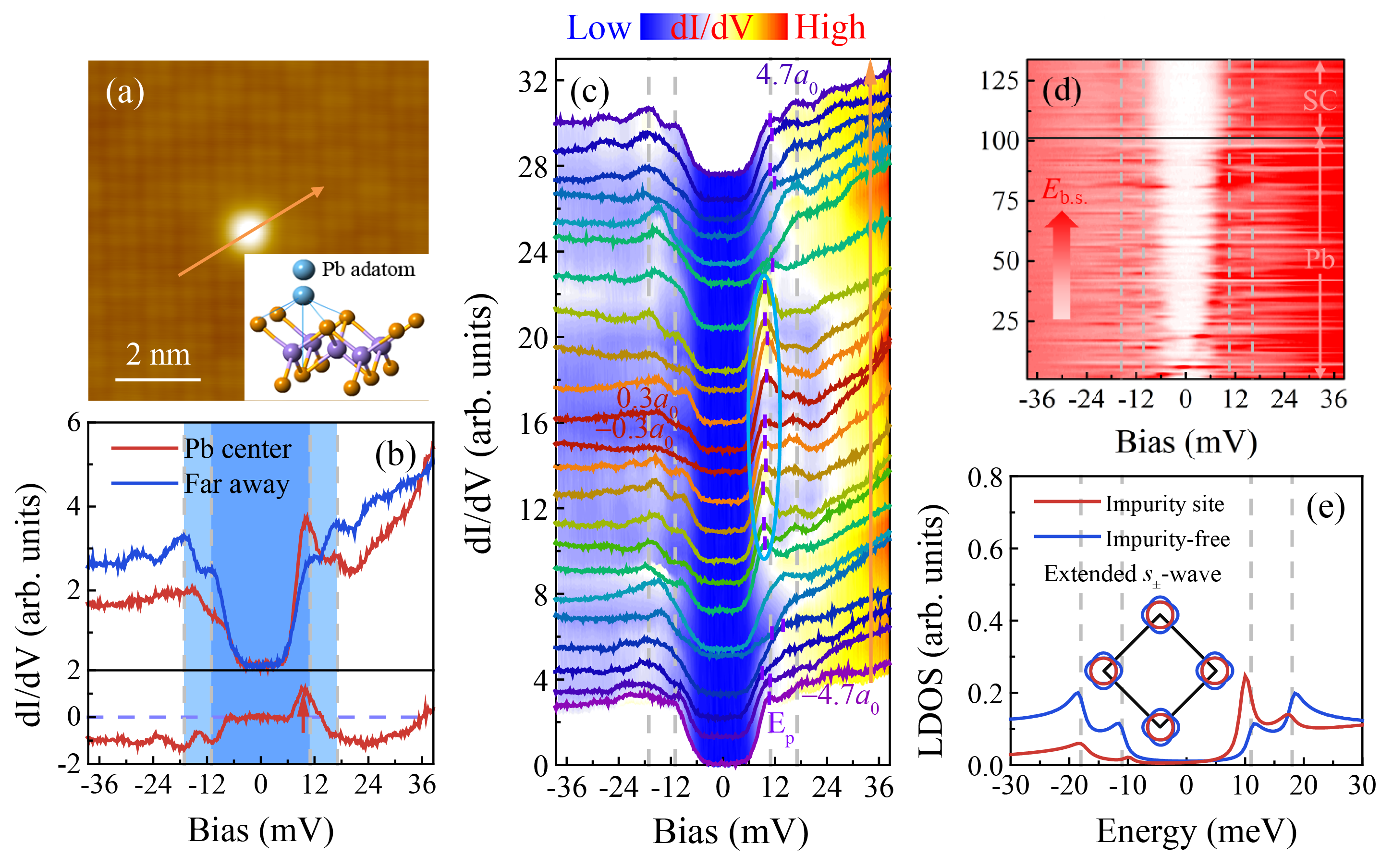
6. Detection of a Superconducting Phase in a Two-Atom Layer of Hexagonal Ga Film Grown on Semiconducting GaN(0001)
A new 2D superconductor with graphene or silicone-like structure formed by the substrate is discovered. It is two-atom layer crystalline Ga grown on GaN(0001) by molecular beam epitaxy (MBE). Both in situ scanning tunneling spectroscopy and ex situ electrical magnetotransport and magnetization measurements show the superconductivity in such two-atom layer crystalline Ga. The superconducting transition temperature TC is 5.4 K, which is 5 times higher than TC in stable bulk Ga phase. The graphene-like structure, which is totally different with Ga bulk structure, might also induce some interesting properties in this two dimensional material. Besides, GaN substrate is a wide used semiconductor in industry, our result demonstrates a pathway for exploring atomic-scale 2D superconductors by surface and interface engineering in a broad range of metal-semiconductor heterostructures, which benefit from present semiconductor technology and ultrathin film fabrication technique.
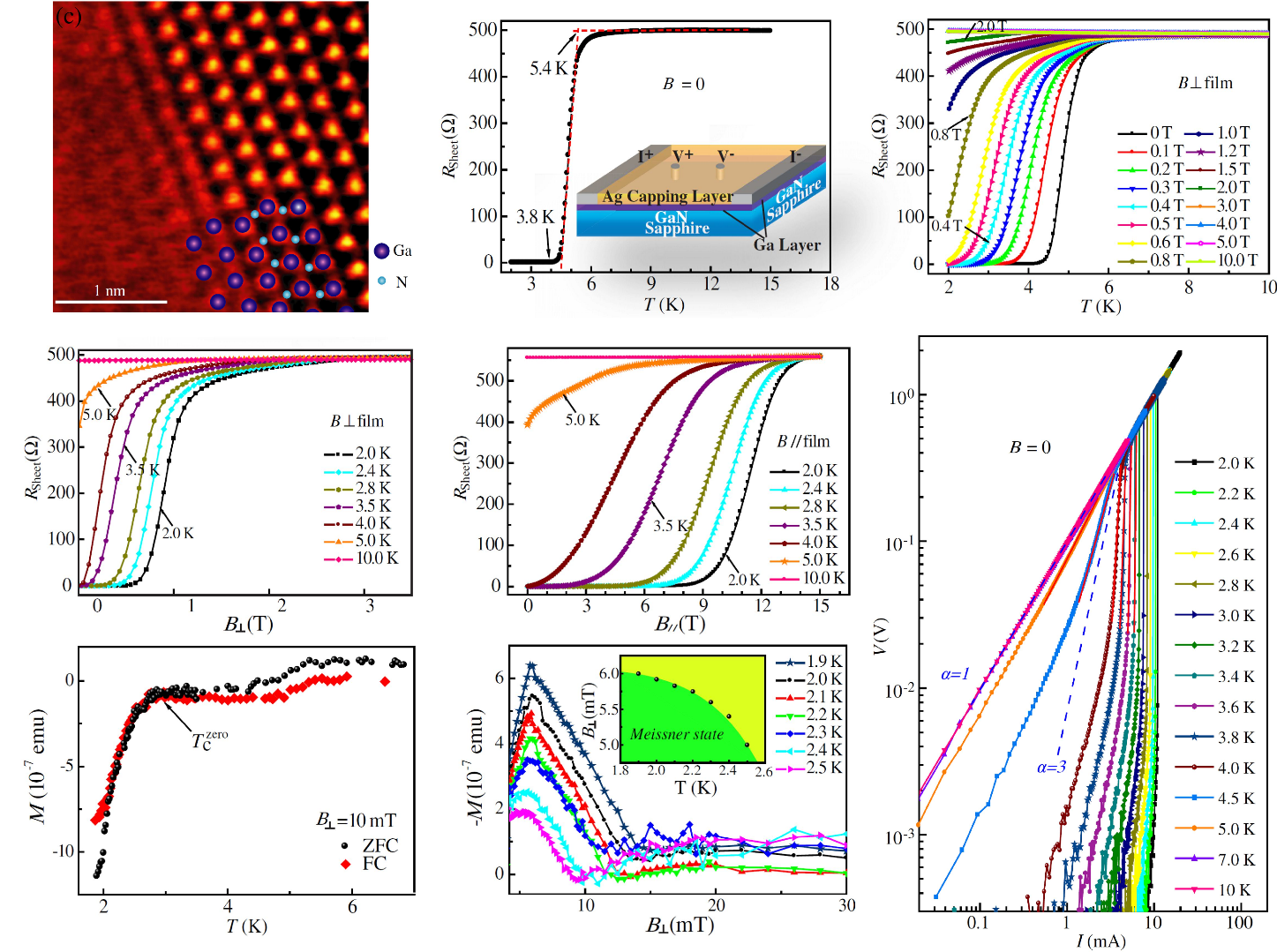
7. Direct Observation of High-Temperature Superconductivity in One-Unit-Cell FeSe Films
The superconductivity of 1-UC thick FeSe films grown on STO substrates is firstly demonstrated by direct transport and magnetic measurements, with an onset transition temperature TC above 40 K (Maximum value is 54.5 K) and a critical current density JC ~ 1.7×106 A/cm2 at 2 K, which are much higher than TC ~ 8 K and JC ~ 104 A/cm2 for bulk FeSe. The enhanced superconductivity with high TC, HC2 and JC makes the 1-UC FeSe thin films on high-dielectric STO substrate attractive for potential applications, such as superconducting interconnects, superconducting quantum interference device (SQUID), and field-effect transistor (FET) devices. Since the superconducting layer is only 0.55 nm thick, the research demonstrated that the 1-UC FeSe on STO is the thinnest high TC superconductor at present. This work not only paves the way to searching for new high temperature superconductors and enhancing superconductivity by interface engineering, but also offers an ideal platform for understanding the fundamental nature of unconventional superconductivity.
